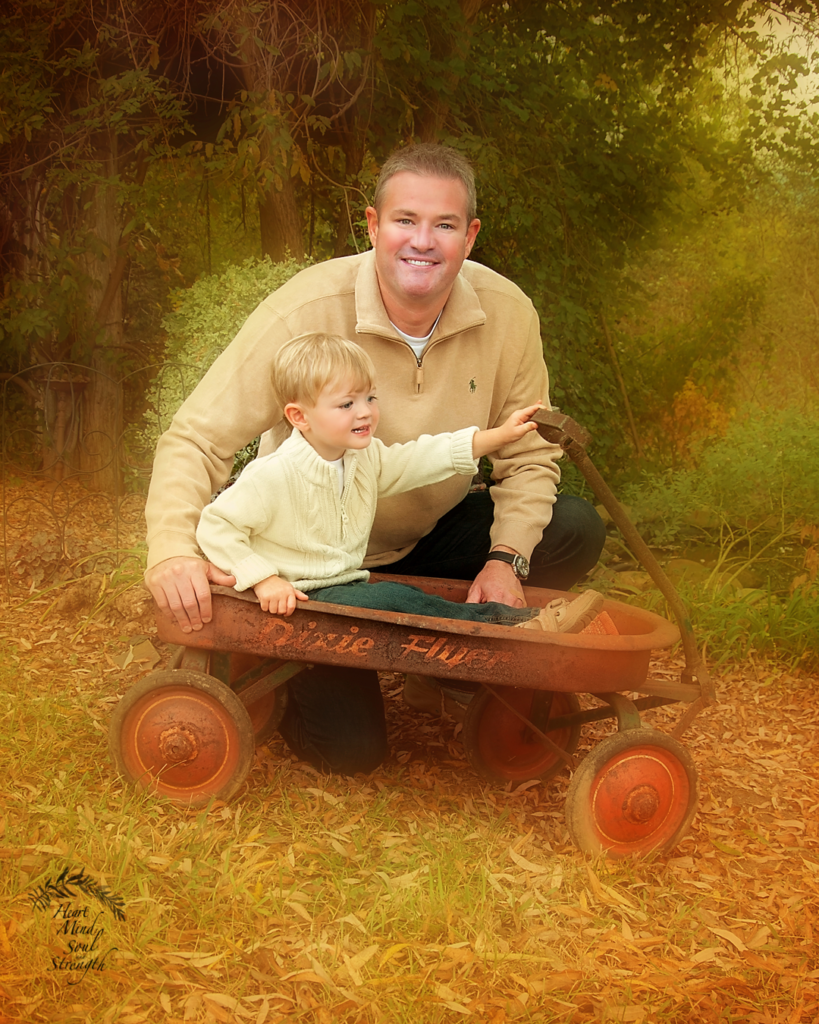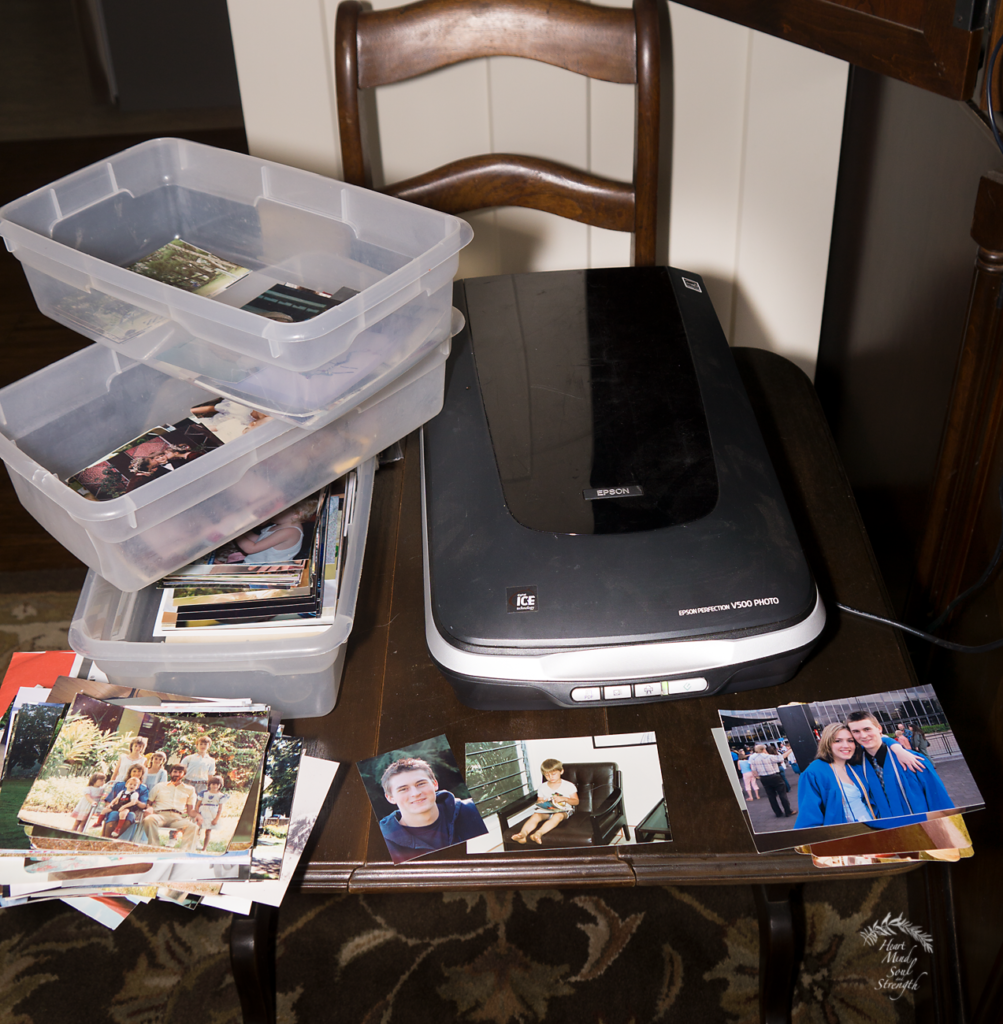I have priceless valuables. I’m actually rich, but my wealth is hidden away. I guess it isn’t hidden in a very safe place, either. In fact, in the quiet of the night, my treasures haunt me. How can I keep them safe? How can I pass them down to our children? You might be asking, “Is she concealing stolen jewels? Or has she embezzled funds?”
But what if I told you that you have hidden treasures, too? If you raised your family any time during the last century, or had parents who did, I’m guessing you have treasures stashed in boxes or totes in your garage, basement, or attic. Not especially safe places for these fragile riches. Such a shame that your children and grandchildren are being deprived of your wealth when they could be enjoying it.
You know you should do something about those boxes of snapshots that tell the story of your family. But it’s just so overwhelming. Well, it’s been weighing heavily on me that I have totes full of snapshots from the era before digital photos. I know I should make sure our six children have copies of their childhood photos. But should I just dump boxes of disorganized photos on my kids? I’ve already done that to one child! As far as I know, those photos are still in the box. What about the photos where several of the siblings are in one photo? Who gets to keep it? So I decided it would be a wonderful gift if I could scan and then print each child’s images in books of their own. Here are tips I’ve found in research about this monumental task and by my own experience just starting to tackle this behemoth.
The Library of Congress has established a set of best practices for preserving and protecting your digital and printed photographs. For ultimate archiving, they recommend backing up your images five ways!
- Store one copy of your digital or digitized photographs on your personal computer. (I recommend an external drive as a better place to store than directly on your hard drive. When your computer crashes, gets a virus, or needs to replaced you still have safe storage that can be disconnected from your computer. Western Digital is usually a reliable brand at a good price. Here.)
- Create two (Yes! TWO!) printed copies. Photographers suggest a combination of individual photographic prints and a series of photo albums. (I recommend storing one set in a different place than your own home. Watching the devastation from forest fires and floods the past few weeks, it seems wise to keep some family photos at a family member’s home not in close proximity to yours.)
- Store a copy on a separate media, such as archival-quality discs, and store these off-site – somewhere far away from your computer! (And from your home. I have clients who store their digital copies in a safe deposit box at their bank.)
- Upload a copy to a cloud-based storage service, such as Sync.com, DropBox, Google Drive, iDrive, or pCloud. (I use BackBlaze.)
Scan old prints
 Many of us in the older generation have hundreds or thousands, in my case, of snapshots printed in the last century. Gasp. The reality is that we only have one copy of each photo in most cases. How do we pass down the meaningful prints to multiple children/grandchildren? Scanning them allows us to make several copies so each child can have a digital file. And it allows us to make printed books which seems to me to be the best option for long term preservation and sharing.
Many of us in the older generation have hundreds or thousands, in my case, of snapshots printed in the last century. Gasp. The reality is that we only have one copy of each photo in most cases. How do we pass down the meaningful prints to multiple children/grandchildren? Scanning them allows us to make several copies so each child can have a digital file. And it allows us to make printed books which seems to me to be the best option for long term preservation and sharing.
- I have some clear plastic boxes that I’ve begun to sort photos into for each child, photos of siblings together in another box, and a box for grandchildren. Next, I’m going to sort those boxes by year.
- Then I’m scanning them several at a time on my photo scanner.
- I’ve been cropping the big scan of several prints into separate images so I can arrange them easily in book format.
- Each child has a file on my external drive of images where the scanned images are being stored.
- When I’ve scanned several years worth of prints for each child’s growing years, I’ll order photo books.
- I’m setting smallish goals. Not all the childhood years of all six kids. I’ll be happy with one small book of a few years for each child to start.

But, it turns out, printing photo books presents a problem. I did a test scan of an old snapshot from the late 1970’s. You know the kind, not very sharp, unidentified blotches, not the greatest color. My HP home printer/scanner seemed to do a decent job of digitizing the paper print judging by my monitor image. But when I checked the image size, I was shocked to find that the digital image produced by my printer/scanner was poor quality. It simply wouldn’t print well in a photo book. The low number of pixels in the capture would have made a blurry printed image. Then I did a test scan with my photo scanner. Although the images looked the same on my computer monitor, the actual pixel dimensions told a different story. I now had a digital file that could be printed in a photo book. I could dial in the photo scanner to digitize the image to bigger pixel dimensions by choosing a higher resolution. But the household printer/scanner digitized it to smaller pixel dimensions at a lower resolution automatically without the option of choosing bigger.
Photo Scanners
So how much should you expect to pay for a photo scanner? Is it worth it, or should you just pay to have your images professionally scanned?
 $170. This is similar to mine.
$170. This is similar to mine.
$79. This one gets good reviews, too. I have no experience with this model.
Scanning services
Scancafe.com special offer 25% off code SFP25
Scanmyphotos.com $.16 per photo or $145. per box. (As many as you can fit into the box they send you)
Phone Scanning
Another scanning option is to use your high megapixel phone to photograph your prints and digitize them.
Keep in mind that using a phone app doesn’t produce the quality of a scanner, but it’s sure better than not preserving your photos at all.
Google’s scanning app PhotoScan works for Android or iOS devices
Ancestry.com app Shoebox works on both platforms. You must open an account first to use their app.
Recommended Photo Books
https://www.mpix.com This is a consumer lab, but is managed by a pro lab. Highly recommend this option for any photo printing needs.
Other Photo Book Companies
- Shutterfly- not a super easy site to use
- Mixbook- easier to use, not as many options. Coupon here
- https://www.mixbook.com/l/PhotoBookGirl?SSAID=218493&refid=5425&refsub=218493&refdata=397527&utm_source=ShareASale&utm_medium=affiliate&mbt_medium=affiliate&mbt_source=shareasale&utm_content=397527&mbt_content=397527&SSAIDDATA=SSCID%5F91k1%5Fepjft
- Blurb- more paper options, less user-friendly
- AdoramaPix
- Collage
- Picaboo
- Snapfish
- Apple Photos
- Montage
Photo Book Company Reviews
https://www.cnet.com/news/best-and-worst-photo-book-making-websites-for-you/
https://www.tomsguide.com/us/best-photo-books,review-2651.html
https://thedailydigi.com/12-different-photobook-printer-reviews
Shutterfly says:
For Photo Books, we recommend the following resolutions (in pixels):
- 12×12, 11×14, and 10×10 Photo Book: at least 2000 x 1600
- 8×8, 8×11, and 7×9 Photo Books: at least 1600 x 1200 pixels
Keep in mind that these dimensions are for a full page image. If you have 2 (smaller) images on a page, you could use smaller dimensions. Notice that dpi isn’t mentioned. What matters is the pixel dimensions. Here’s a quick way to make sure your digital image is suitable for the size you wish to print: Divide each side of your image’s pixels by 300 which is the recommended dpi to print on paper. This gives you the inches you can print clearly. For instance, say you have a digital file that is 1600 pixels wide by 1200 pixels high. Divide by 300 to get size 5“x4” for high quality, or 6”x5” for acceptable quality at 240dpi.
How to find out what dimension your image is
On a Mac- open the image in Preview > Tools > Size
Or right click on the photo > Get Info
Or Command-I
On a PC- right click on image > Properties
For further reading: http://www.photobookgirl.com/blog/what-is-the-right-resolution-or-dpi-for-photos-when-making-a-photo-book/
Apple says:
Recommended photo resolution by product
After you’ve found out the pixel size of your photo using the steps above, you can use this table to make sure the photo will look great when it’s printed.
Find the product you want in the first column, and then make sure your photo is larger than the dimensions given under Minimum recommended (180 dpi). (For the best quality, your photo should be closer in size to the dimensions listed under the last column.)
| Product | Photo Size (in) | Minimum recommended (180 dpi) | Best quality (300 dpi) | |
| Extra-large Hardcover Book | 13 x 10 | 2375 x 1836 | 3938 x 3044 | |
| Large Hardcover Book | 11 x 8½ | 2010 x 1558 | 3338 x 2587 | |
| Medium Softcover Book | 8 x 6 | 1440 x 1080 | 2438 x 1838 | |
| Small Softcover Book | 3½ x 2 ⅝ | 660 x 495 | 1088 x 825 | |
| Extra-large Square Book | 10 x 10 | 1836 x 1836 | 3044 x 3044 | |
| Large Square Book | 8 x 8 | 1440 x 1440 | 2438 x 2438 | |
| Square Softcover Book | 8 x 8 | 1440 x 1440 | 2438 x 2438 | |
| Calendar | 13 x 10 | 2375 x 1836 | 3938 x 3044 | |
| Folded Card | 5 x 7 | 1300 x 928 | 2138 x 1538 | |
| Flat Card | 4 x 6 | 1105 x 736 | 1838 x 1238 |
Learn more
- The dimensions listed in the table above are for full-page, full-bleed photos (photos that extend to the edge of the page). You can use proportionally smaller images for multi-picture spreads.
- https://support.apple.com/en-us/HT201495
Further Reading
https://www.cnet.com/how-to/how-to-scan-and-archive-your-old-printed-photos/
Other Resources
https://www.savefamilyphotos.com